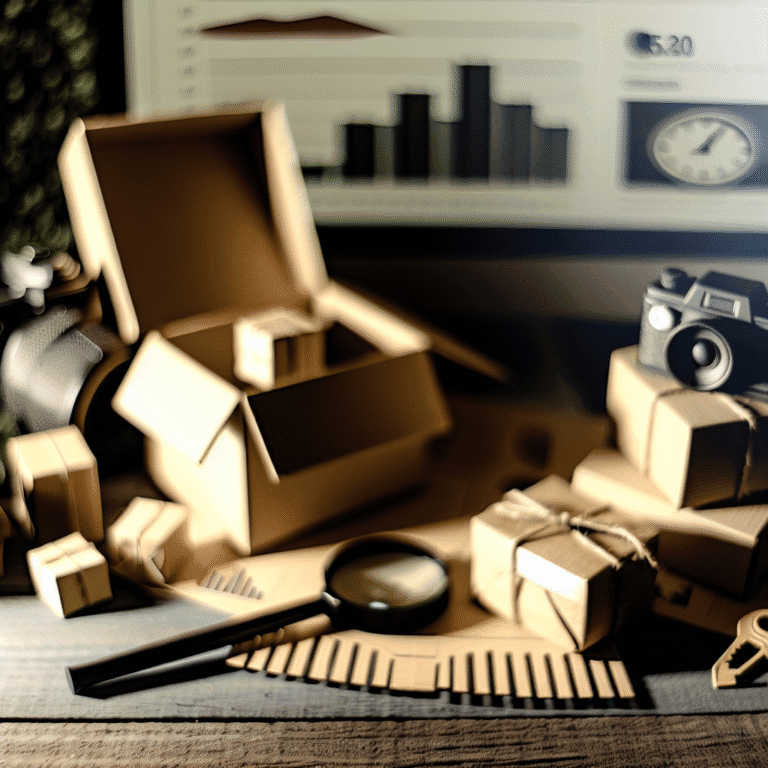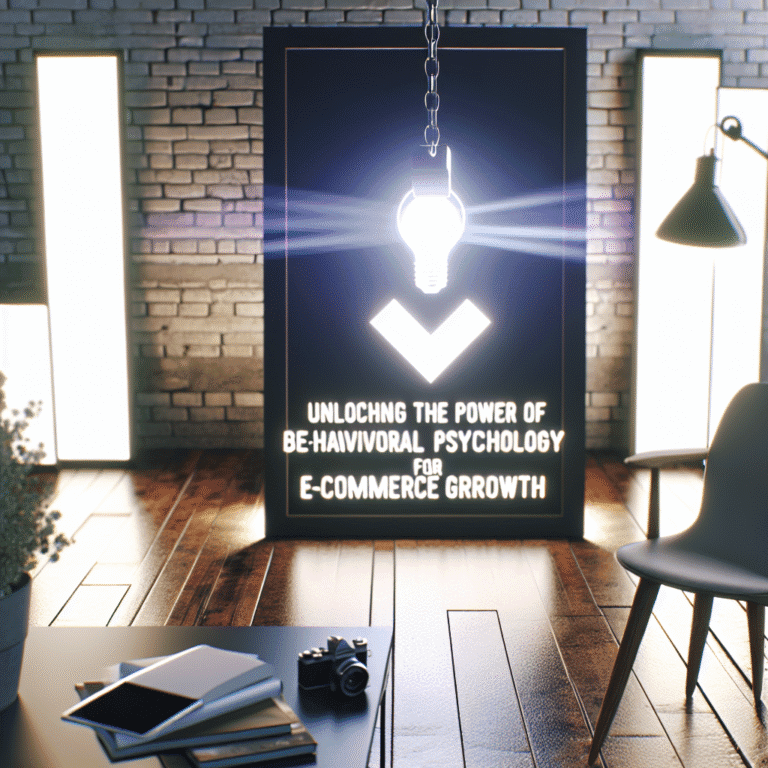Why Customers Sometimes Play Hard to Get
Picture this: your e-commerce store is ticking along nicely. Lovely design, slick ads, quick-loading pages. But why are all those clicks not turning into sales? Your shoppers aren't buying because you're courting browsers, not buyers. Fancy that!
Here's the scoop: the secret to more sales isn't in the snazzy UX design. It's in the grey squishy bit between your customers' ears. People want more than a fast checkout. They crave an emotional touch, a sense of urgency, and a sprinkle of confidence. That's where behavioural psychology comes into play.
Making sales isn't about tricking people. It's about understanding how they tick and making things easier for them. It's like offering someone a comfy chair rather than a stiff one when they visit.
Understanding Customers to Boost Sales
You're not just flogging T-shirts or gizmos. No, what you're really offering is a simple "yes" or "no". And truth be told, most buyers don't know why they're spending their hard-earned cash.
A bit shocking, right? Most brands assume buyers have it all sorted in their heads, but it doesn't often work like that. This is where behavioural psychology steps in to smooth things over. You're not twisting anyone's arm – just making the decision feel like a no-brainer.
A study published in the Harvard Business Review tells us that emotionally-connected customers are far more valuable than those who are just pleased as punch. Emotion wins over efficiency, and that, my friend, can really bulk up your bottom line.
Ten Ways to Use Behavioural Psychology to Boost Sales
These nifty tricks are trusted by top brands and tried and tested in the real world. Pick a couple, track your numbers, and see where it leads.
Social Proof
We humans love following the crowd. Online, we look around to see what others think is the bee's knees.
Try these:
- Feature customer reviews where they'll be seen
- Use pop-ups like, "Susan in Swansea just bagged this deal!"
- Show off real customers using your products
Brands like Allbirds do a brilliant job with this. Their pages are like a nod from a pal telling you "You can't go wrong with these."
Scarcity Works Wonders
The fear of missing out is real. But, be warned, fake scarcity smells fishy.
Keep it real with:
- "Limited stock – back next Friday"
- Honest countdown timers for short-lived sales or baskets on the verge of vanishing
- Exclusive season launches
When people think something might be gone soon, they step on the gas. But only if it comes across as genuine.
Anchoring Helps Buyers Feel Savvy
Comparisons are king. We don't always know a good price, so we compare.
Use it to your advantage:
- Show old prices next to sale prices
- Put expensive items next to mid-range ones to make those mid-tiers seem like a steal
- Bundle offers like "Save £20 when you grab X and Y together"
Get it right and value looks better, even when it hasn't budged.
Tap into Loss Aversion
The pain of losing stings more than the joy of gaining. It's why "Don't lose your 10% off" often beats "Get 10% off".
Here's how:
- Warn users their discount's disappearing
- Show them what they'll miss if they ditch their cart
- Say things like "Items may soon vanish" or "Reorder to keep your rewards"
The Journal of Consumer Psychology says framing things around loss speeds up action.
Commitment & Consistency
Once a shopper takes a tiny step, the next one's easier.
Try this:
- Let users add to a wishlist
- Offer "Remind me when it's back" options
- Show recently viewed items
Take Zalando, for instance; add boots to a wishlist and soon enough, you get a "We're holding your size" email. Suddenly, past actions rub off on future intent.
Give Before You Ask
People are inclined to repay favours. Give your customers a freebie and they'll likely feel loyal.
How to give:
- Pop free samples in their delivery
- Offer surprise bonuses at checkout
- Reward them with loyalty points just for logging in
Beauty brands are aces at this. A little extra treat in the parcel and customers find themselves spreading the word.
Cognitive Ease
The less effort needed to use your store, the better. A savvy design lowers the mental load.
Some tips:
- Keep calls to action easy to find
- Default to popular sizes or bundles
- Reduce choices to avoid decision paralysis
- Let people shop without signing up
Fewer steps mean more clicks where you want them.
Trust Authority
When experts endorse something, it cuts through the mental clutter.
Do it wisely:
- Use press coverage and real quotes
- Display any awards or expert nods
- Use lines like "Recommended by dermatologists"
People lean on trusted testimonials and it doesn't hurt your SEO.
Familiarity Breeds Buying
We love a bit of routine. Seeing your brand regularly builds a sense of trust.
Stay consistent:
- Match the colours, straplines and style of ads and emails with your site
- Retarget ads like "Still pondering these trainers?"
- Keep brand elements, like logos and fonts, consistent
Familiarity doesn't breed contempt online; it builds trust. That's why the top dogs focus on brand recall.
Make the Default the Easy Choice
Little choices can be a stumbling block. Make the next step obvious.
Examples:
- Pre-select popular bundles
- Offer defaults for size or colour
- Automatically pop promo codes in the basket
- Highlight what most shoppers choose
People rarely alter the default. Help them along with confidence and fewer decisions.
Wrapping It Up
Don't go gung-ho and try everything at once – that's not strategy, that's chaos.
Instead:
- Spot where customers drop off
- Pick a couple of psychological tricks to try
- Test a change, measure the results, and double down on what works
For example, if users leave without adding to cart, boost familiarity and authority on the homepage. If they're losing interest at checkout, use loss aversion and make the process easier.
This is about behavioural smarts, not blind guesswork.
Remember, removing obstacles leads to better decision-making and happier customers. The key isn't outsmarting people—it's helping them along. And let's be honest, when emotion makes people act, you know which side fattens the bottom line.
Now, give one of these a whirl and see what happens. Sales, my friend, have always favoured psychology. Give it a nudge today.





